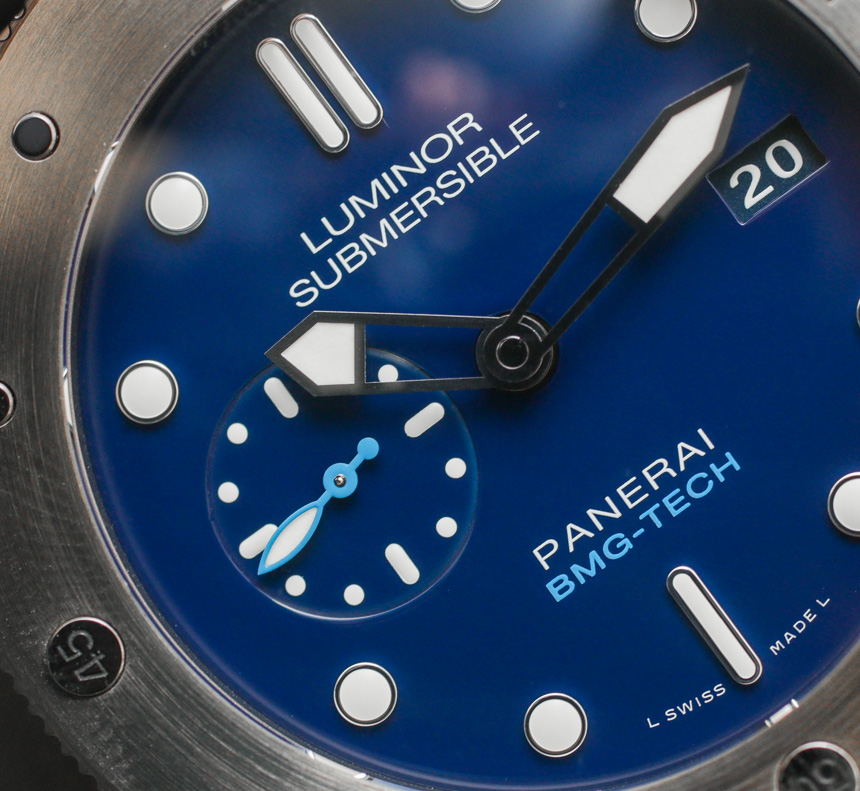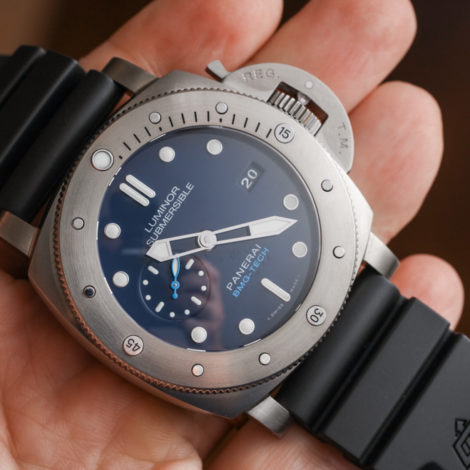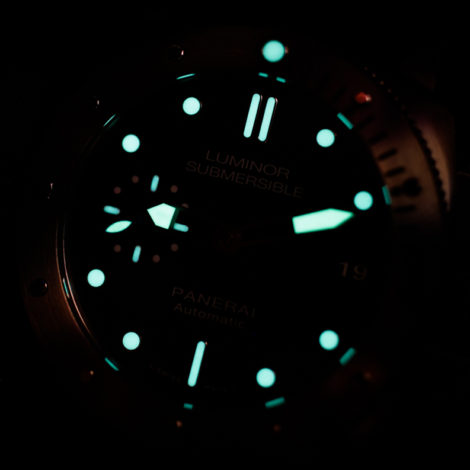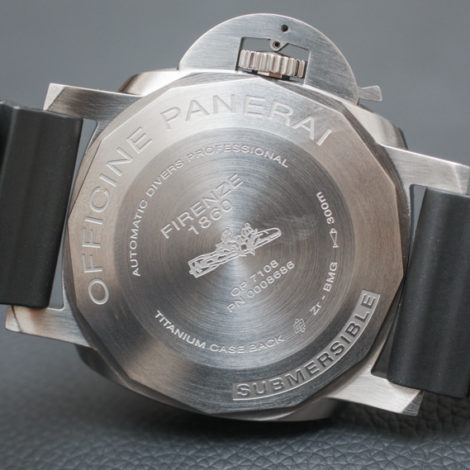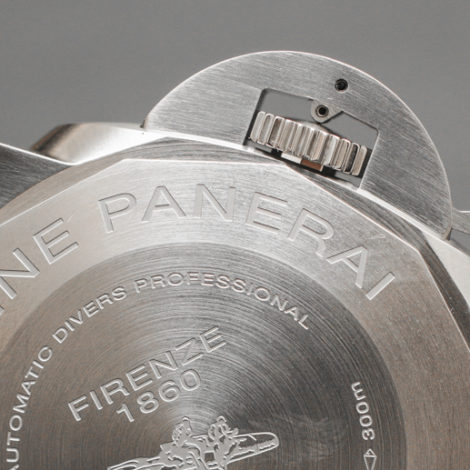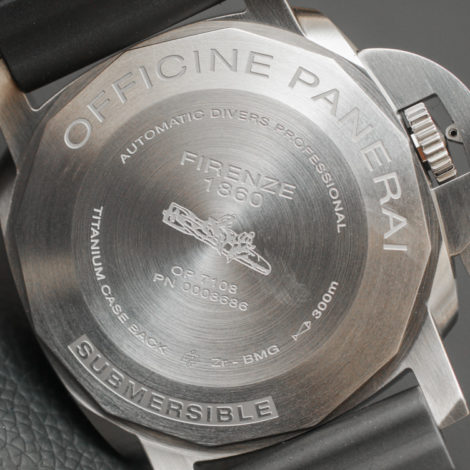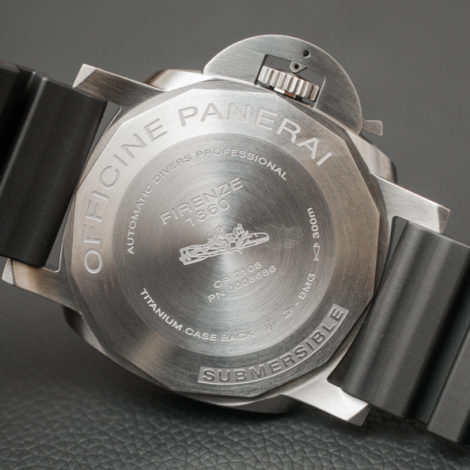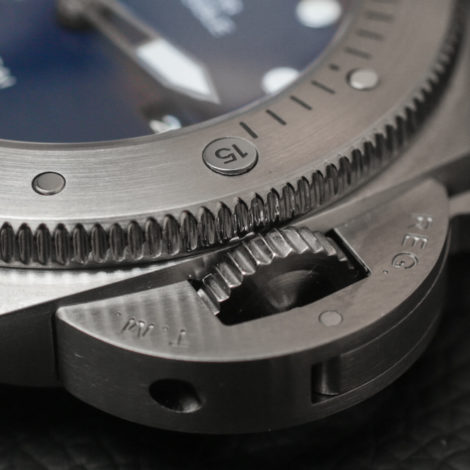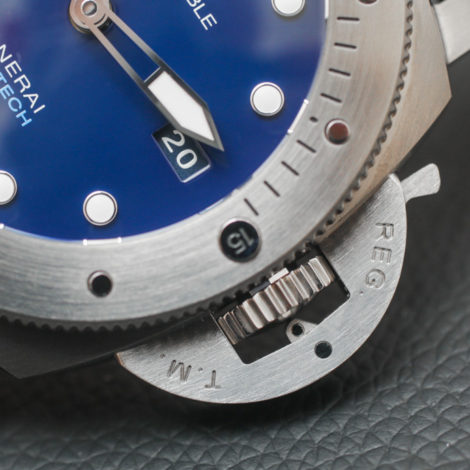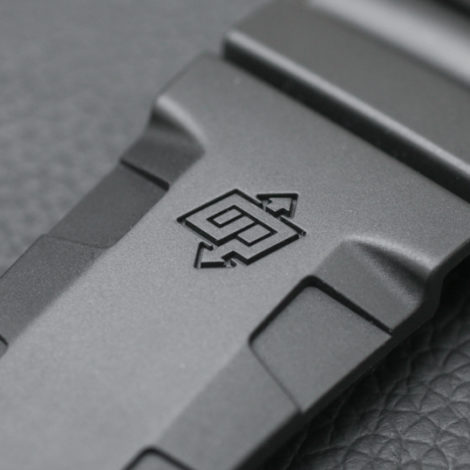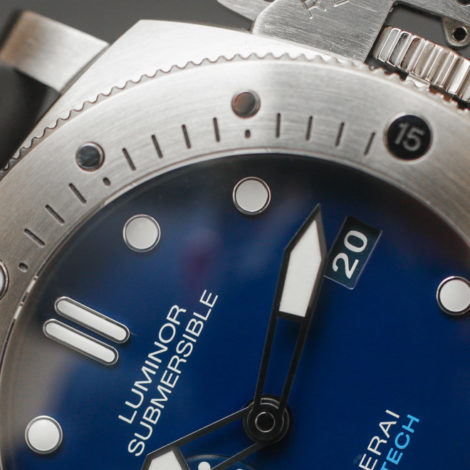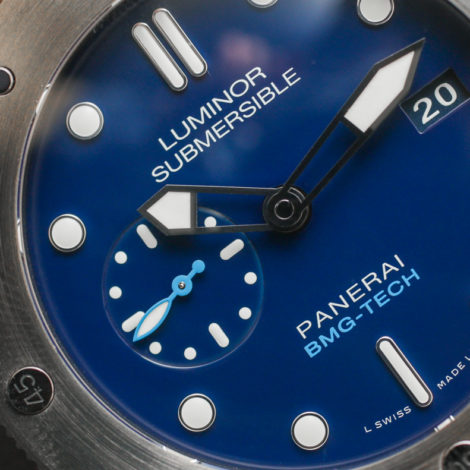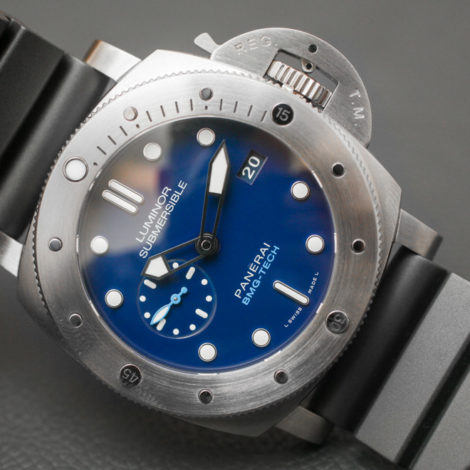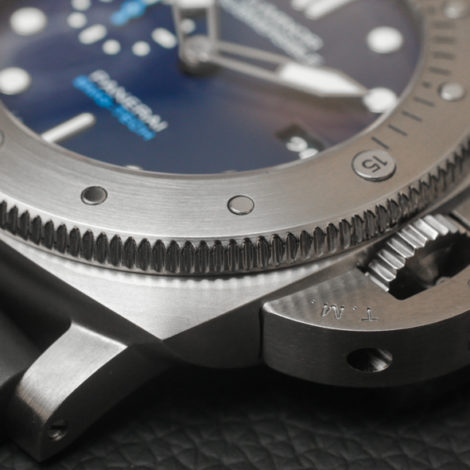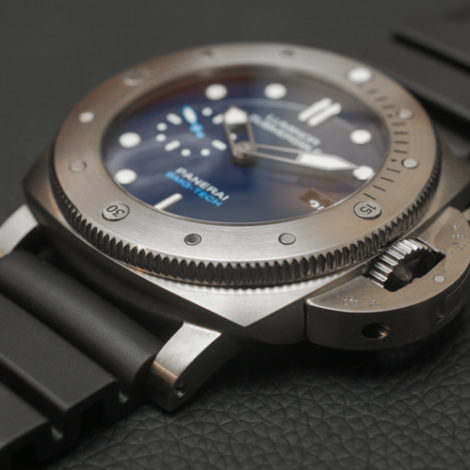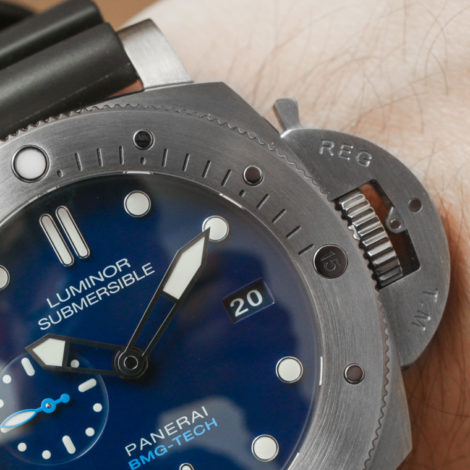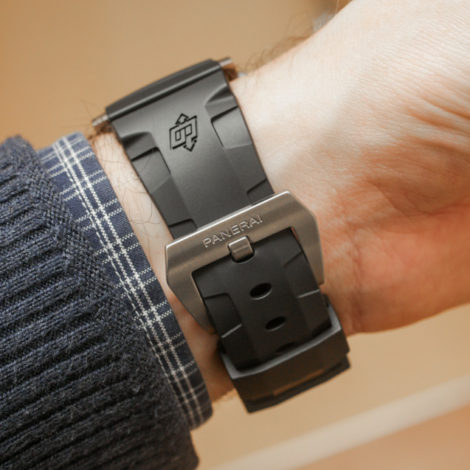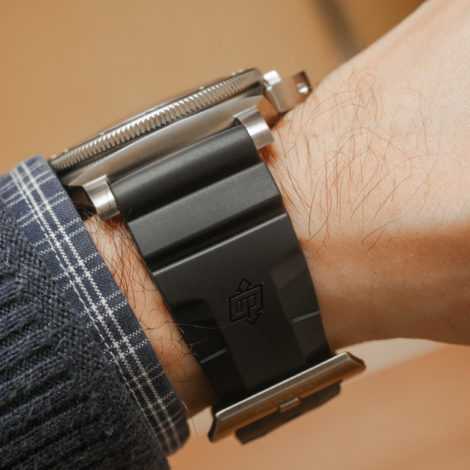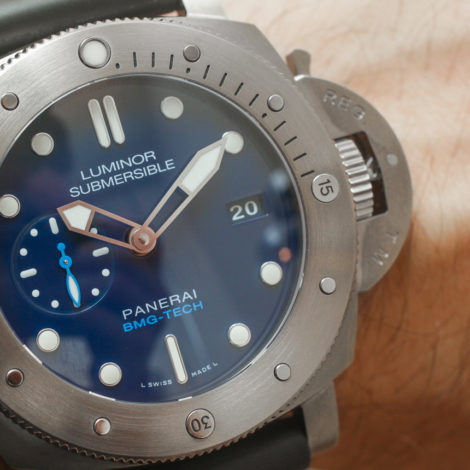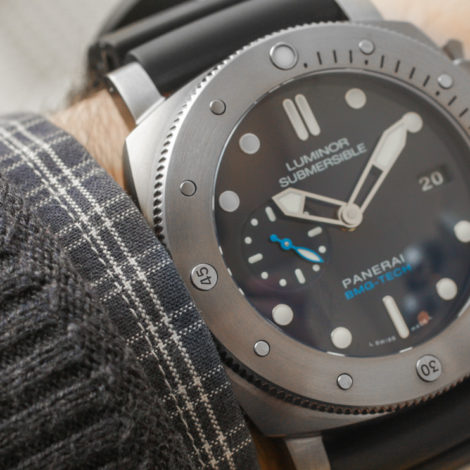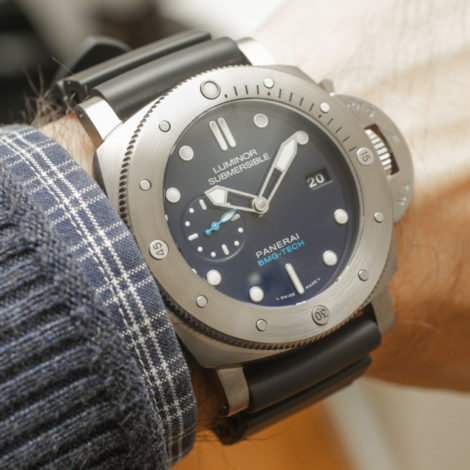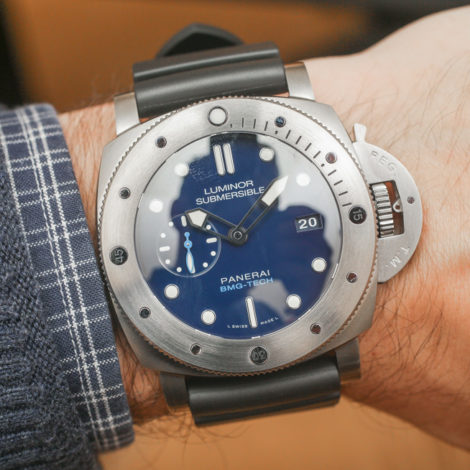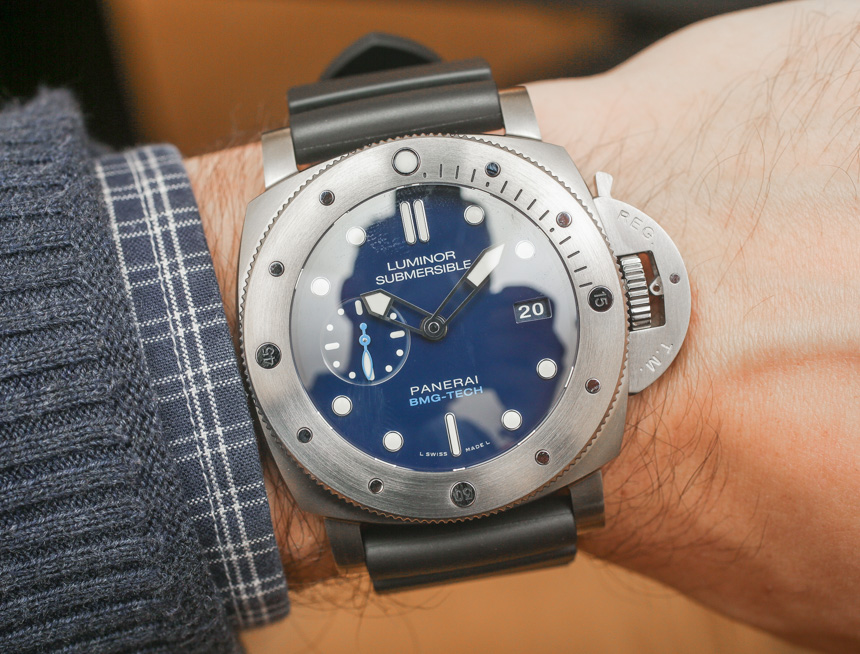
It may be the rare watch nerd (that happens to also be a materials science nerd) who will be able to fully appreciate why Panerai decided it was a good idea to note “BMG-TECH” on the dial of a Luminor Submersible as a way of telling you about the watch case materials. Panerai themselves refer to the value of the PAM 692 (debuted on aBlogtoWatch here) as being an “invisible innovation.” In a sense that is a good thing when it comes to the appeal of bulk metallic glass. What is hidden in the Panerai Luminor Submersible 1950 BMG-TECH 3-Days Automatic PAM 692 is a hint at what future materials will be increasingly used in watches.

The popularity of ceramic, for example, demonstrates a real need for watchmakers to move beyond traditional metals. The decision to work with non-metallic case materials isn’t just about being trendy and fashionable, but is often related to real value for the consumer. While we are on the topic of ceramic, indeed it was a material that allowed you to have a permanently white case. It also allowed for high levels of scratch resistance as well as resistance to various chemicals.
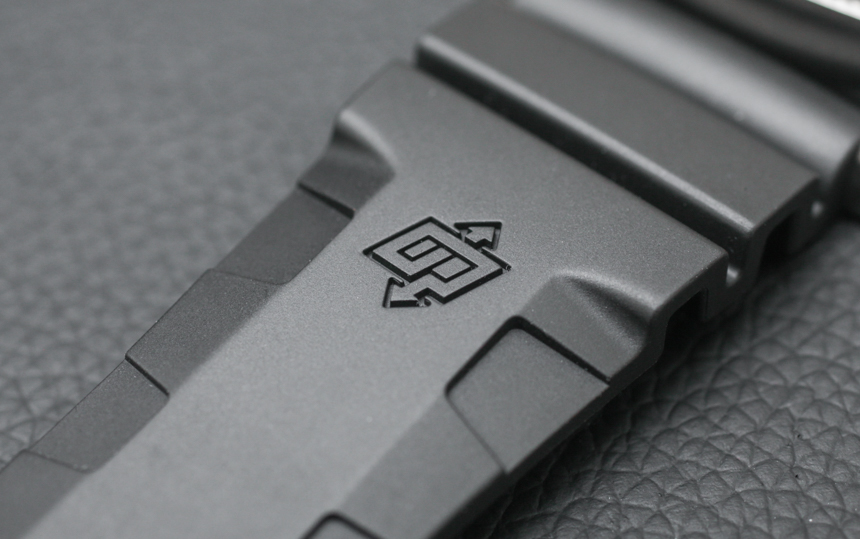
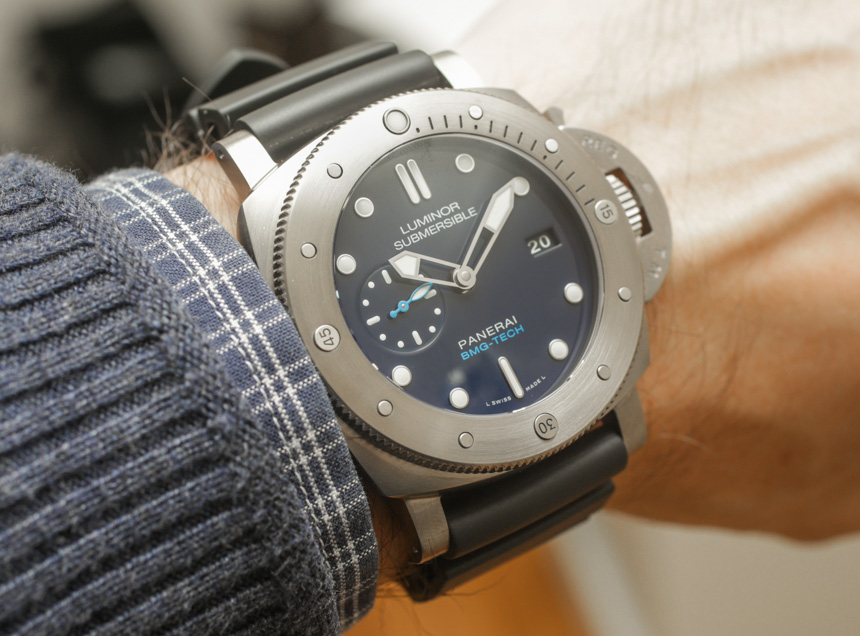
Panerai likes to experiment with new case materials regularly – so the fact that they would take a product and make it out of bulk metallic glass isn’t particularly novel. With that said, if BMG-TECH proves cost-effective to produce and popular with customers, I think it has big potential. In short, bulk metallic glass is a metal alloy with an amorphous structure versus a crystalline structure. This allows for fewer surface imperfections in the base material, that translates into a number of benefits for the consumer.
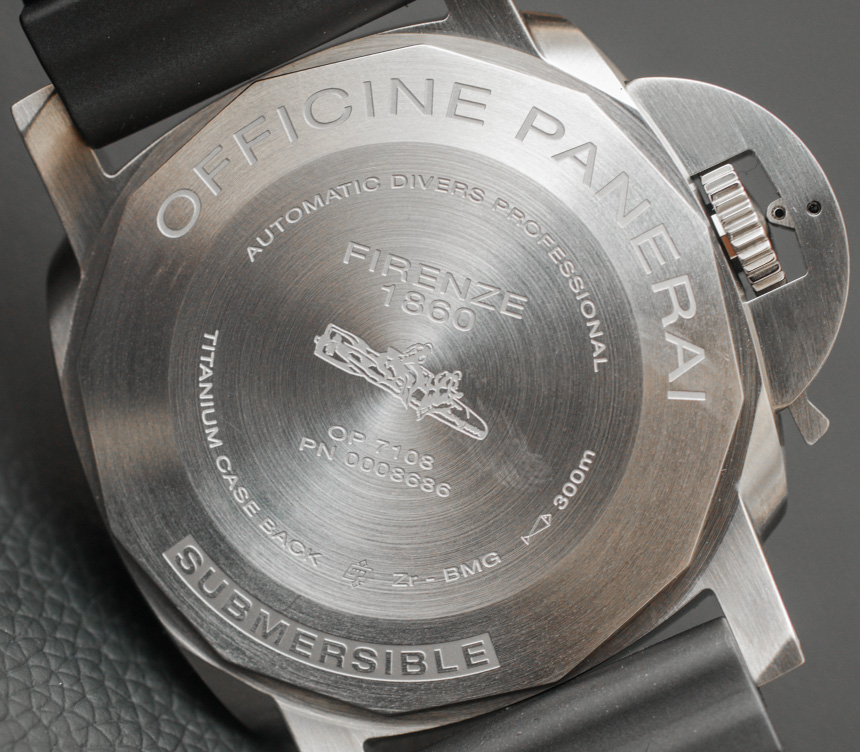
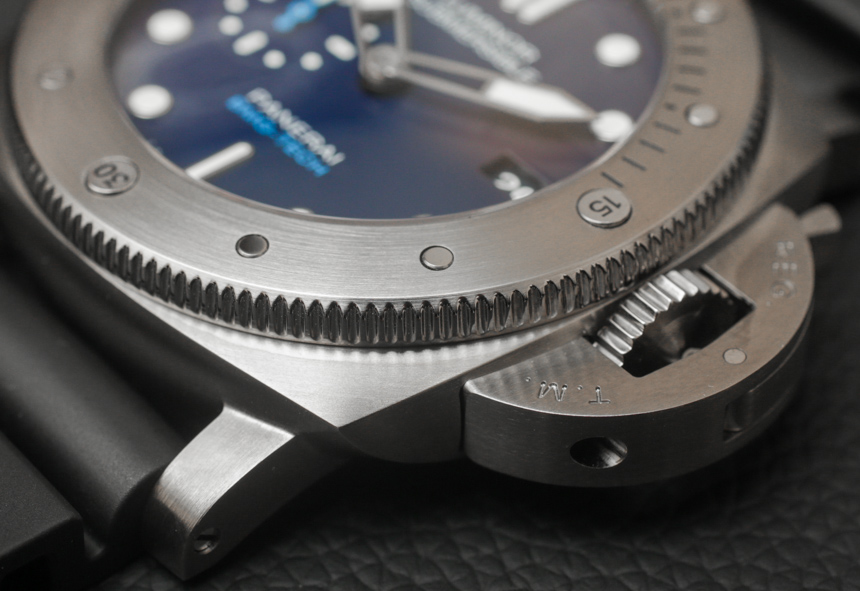
Compared to traditional stainless steel, bulk metallic glass is 2-3 times stronger and more scratch resistant, lighter in weight, tougher in terms of rigidity, and also more corrosion resistant. I think the appeal to brands like Panerai (in addition to wishing to bring new value to their consumers) is to have materials that allow them to make better products more easily. I’m not an expert, but my understanding is that an alloy like bulk metallic glass can be machined to look attractive in either fewer steps or more simple steps given the fewer imperfections in the material. If this is true, watchmakers would prefer it because it would allow them to make ideal-polished cases more easily and if they need servicing, they can be polished more easily. It, of course, helps that consumers will enjoy the extra added durability.

Unlike steel, bulk metallic glass has a lot more zirconium in it (which is why it has “glass” in the name), and it also happens to be non-ferrous (not magnetic). Panerai says that their particular bulk metallic glass alloy blend consists of zirconium, copper, aluminum, titanium, and nickel. What matters is that BMG-TECH looks a lot like steel, and can be decorated like steel – but it isn’t steel. Other alternative materials to metals sadly don’t look like metals – even if they are preferred by consumers and offer manufacturing benefits. Bulk metallic glass is essentially a metal alloy, so it can be polished like metal, and is tough like metal in that a fall on a hard surface would never shatter it (a possibility with ceramic). So the goal here is to find materials that offer the same aesthetic appeal as a metal, but that are easier to produce into finely-finished parts, and that offer consumers clear durability benefits.


Other brands use various types of alloys such as this for watch cases. I recall that Audemars Piguet sometimes use a material they call “Cermet” (ceramic metal) for bezels and perhaps as an entire case material. The benefit of cermet was similar to BMG-TECH in that it was tough like ceramic but had the visual appearance of metal. Cermet was a bit darker in shade, so it leads me to believe that bulk metallic glass might be a bit of a different formulation for this Panerai PAM 692. The caseback is titanium, which also happens to be the part of the case with the most detail. My instincts tell me that while bulk metallic glass is a compelling material, it is harder (and thus more expensive) to machine than most metals.
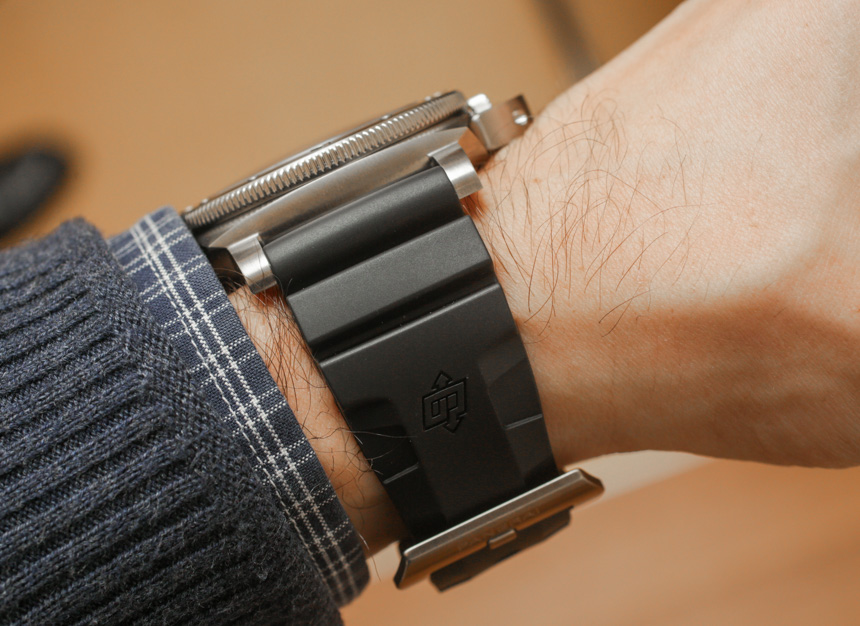
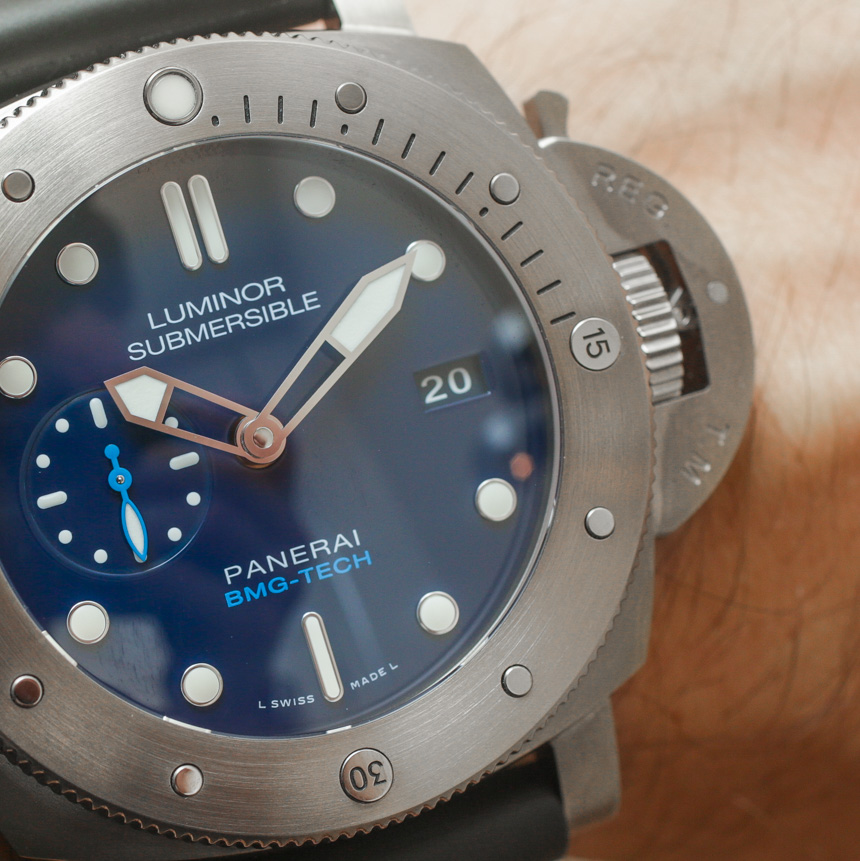
If bulk metallic glass indeed proves to be easy and wise to industrialize, then I think consumers will benefit from a material that is easier to care for and will look newer longer. Even though watch visual design and mechanical movement technology appear to evolve glacially, the watch industry has always been very accommodating to interesting materials and colors for their products. More so, they have readily adopted newer materials over older ones if they are more effective. Consider for example the move from acrylic crystals to ones made out of sapphire crystal (and what a big deal that was), or the move from aluminum to ceramic bezel inserts on certain timepieces. Each of these material adoptions occurred (for the watch industry) very quickly. Thus, innovations in case material technology – if economical on all ends – has a high likelihood of being adopted by the brands.
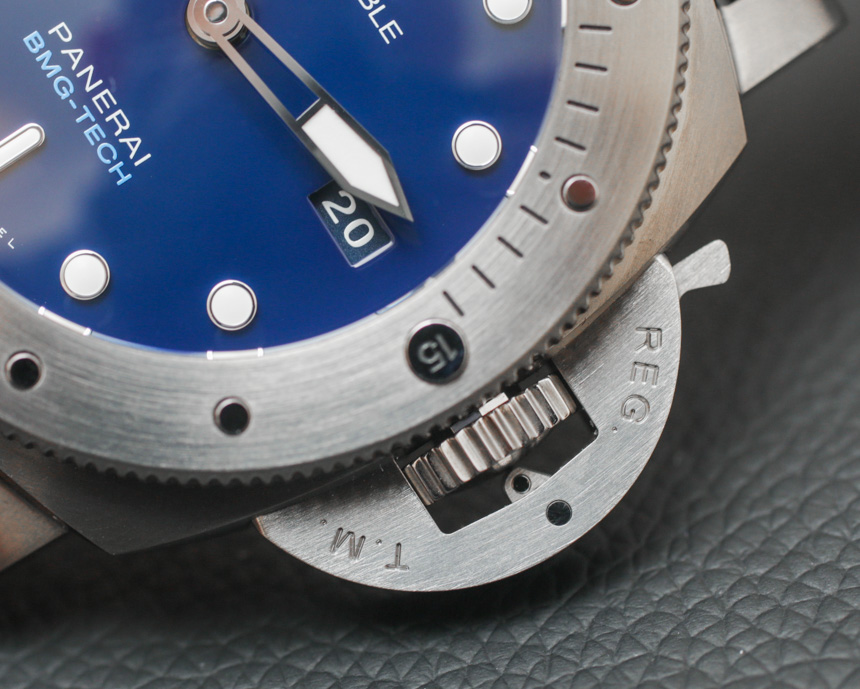
Let’s return to the Luminor Submersible 1950 BMG-TECH 3-Days Automatic PAM 692, that is otherwise an entirely competent, albeit unremarkable Panerai that you might never know had something different about it if someone didn’t tell you in advance. David from our team took photographs of the watch, and I recall in the hectic circumstances of SIHH 2017 I didn’t think twice about the watch after handling it. It isn’t bad or anything, just not something that offers too much benefit over a standard Luminor Submersible for current owners.
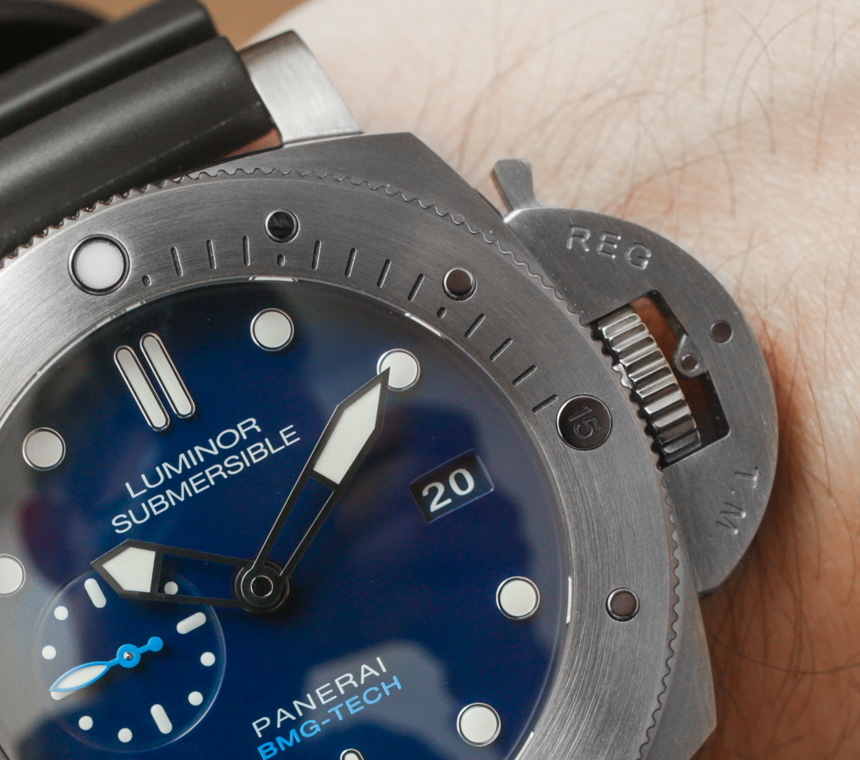
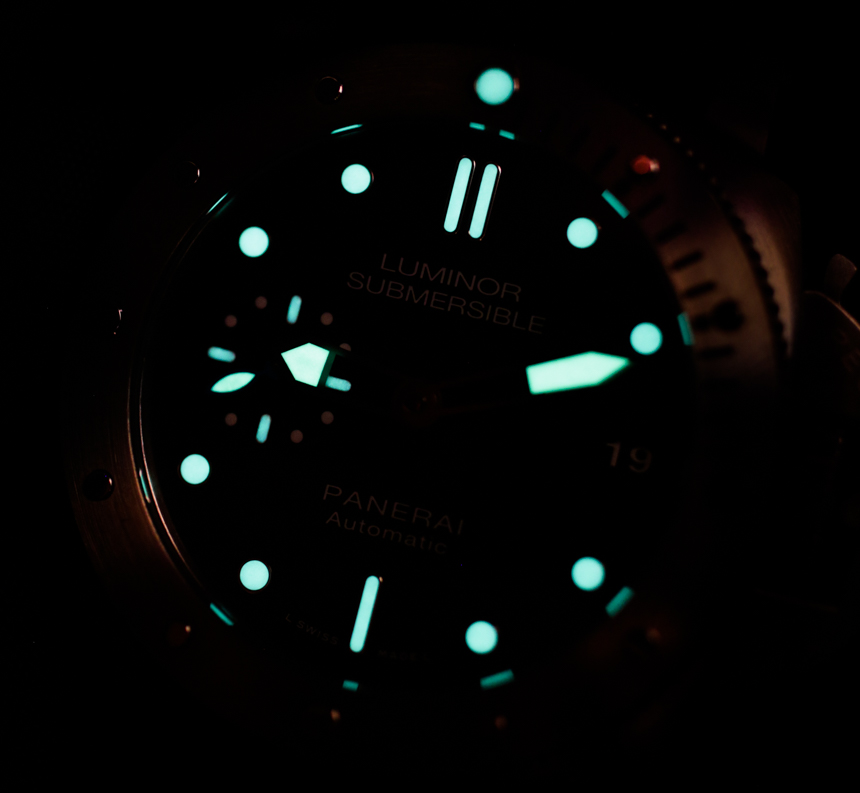
All that being said, this is one of the most “big personality” yet elegant-looking retro-styled diving watches I’ve recently seen. Other than the hands, which I feel are a bit on the stubby side, this is a very attractive and useful base watch that is just different enough amongst Panerai products to feel non-generic. It also happens to be a real diver’s watch, which makes it feel more authentically “Panerai” given the brand’s core history and purpose for existing.
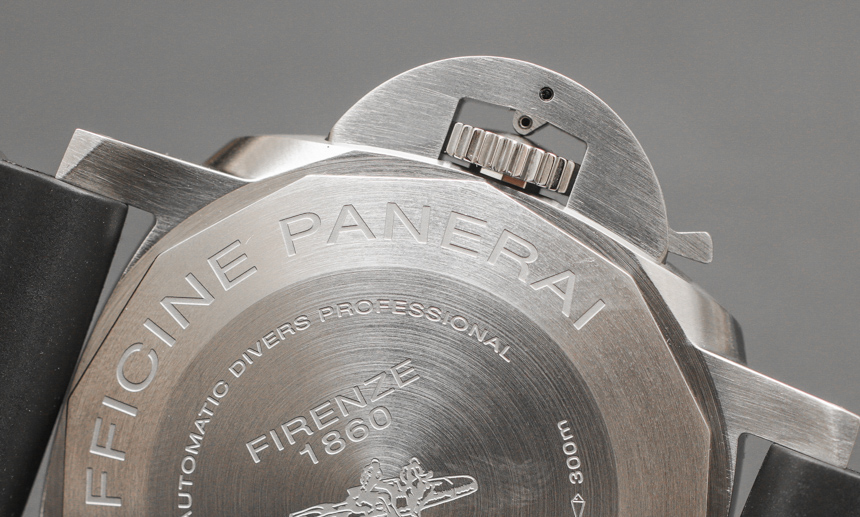
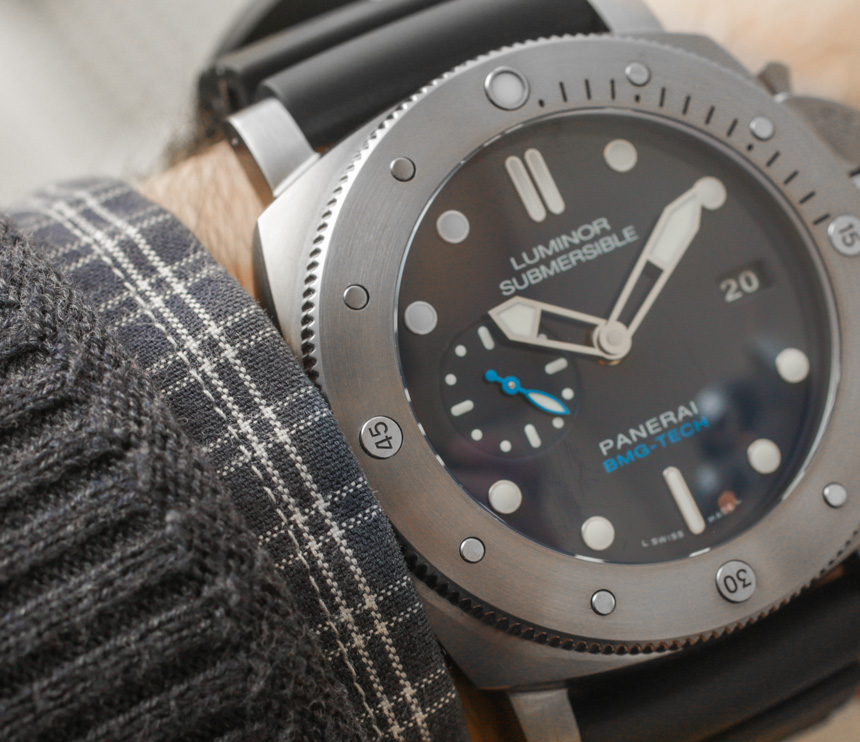
The bulk metallic glass case is 47mm wide – and yes it wears large (but comfortably). As far as we know the case dimensions are the same as any other Luminor Submersible 1950 model. Inside the 300m water resistant case is an in-house made Panerai P.9000 automatic movement with three days of power reserve. Stylistically, the dial is marked by shades of blue including a darker blue dial, with lighter-blue accents mixed with steel-colored elements.
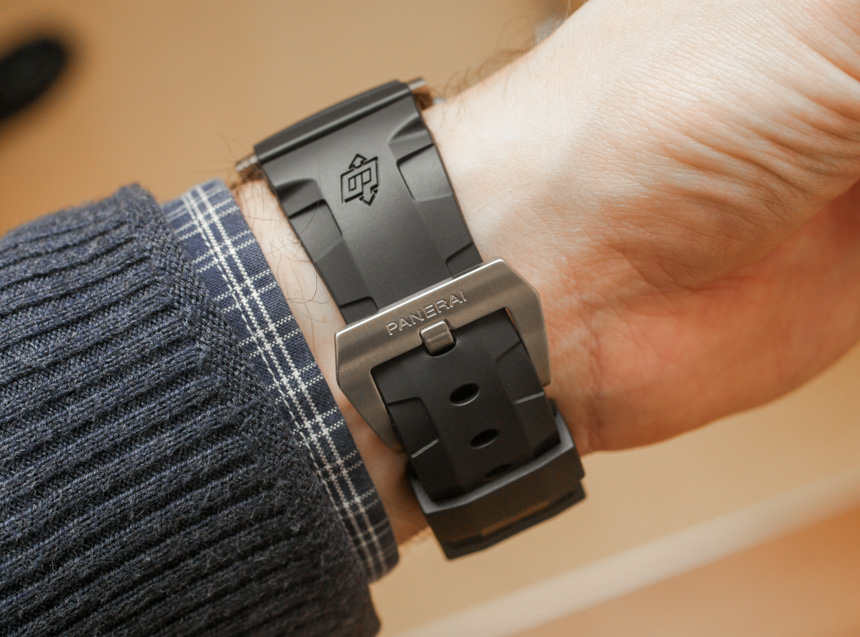
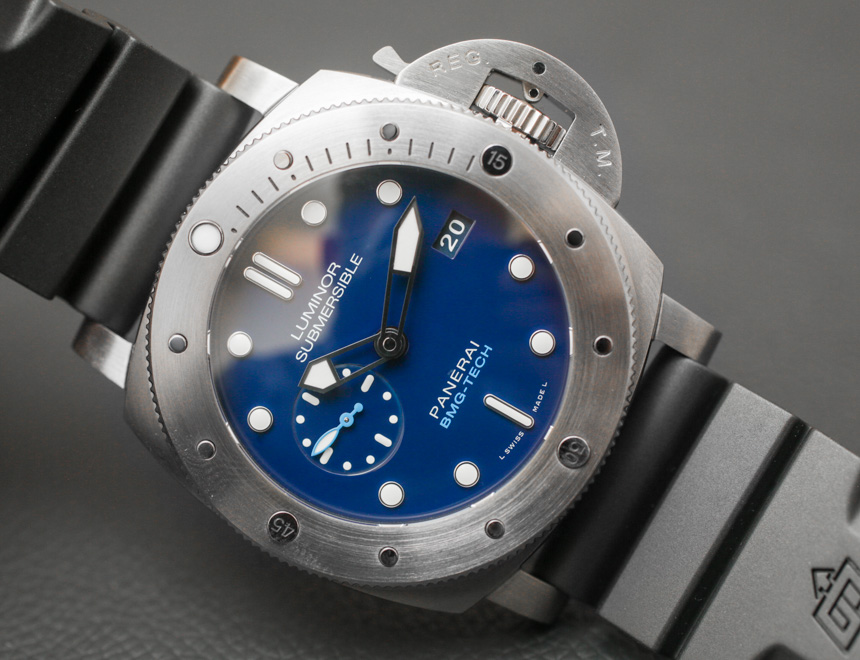
Attached to the Luminor Submerisble 1950 BMG-TECH case is a simple black rubber diving-style strap. If one didn’t know better, you’d almost think Panerai wanted to be discreet about why it was using this particular type of case material. The Panerai website itself does discuss bulk metallic glass in a technical way, but sort of fails to get to the point with their message on why consumers might choose the material. More so, the PAM 692 is not part of a limited edition, so it means Panerai is legitimately curious to see how the material does in the market and is open-minded to expanding production. Price for the Panerai Luminor Submersible 1950 BMG-TECH 3-Days Automatic PAM 692, is a lofty $10,200 USD. panerai.com

